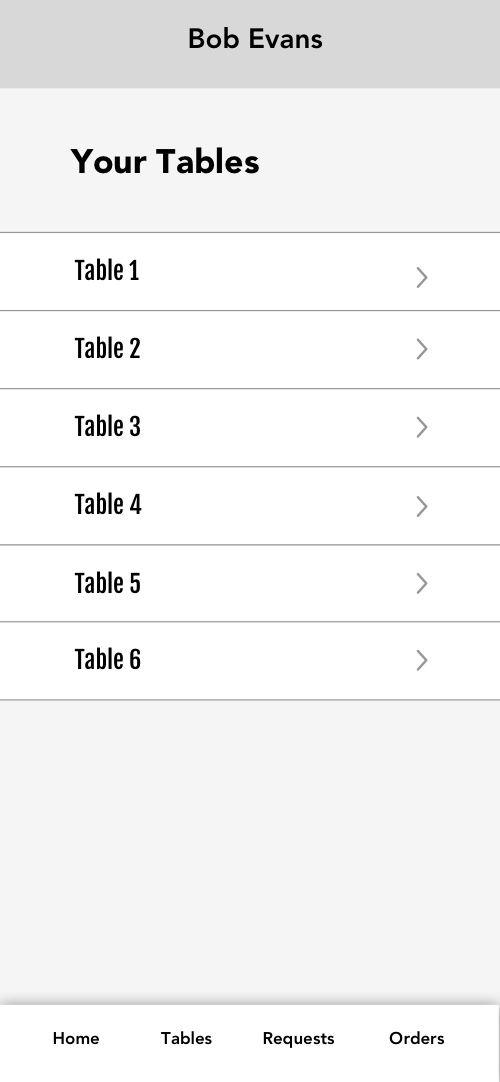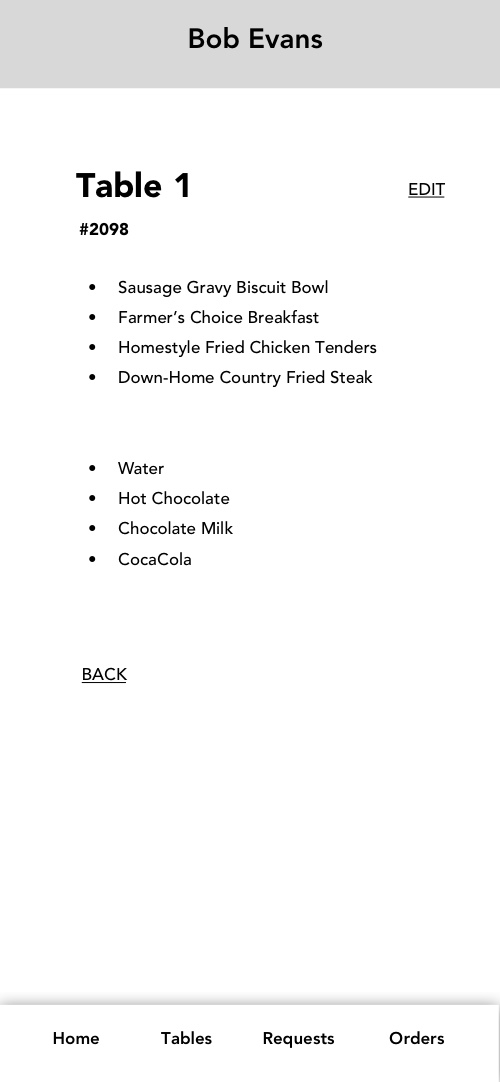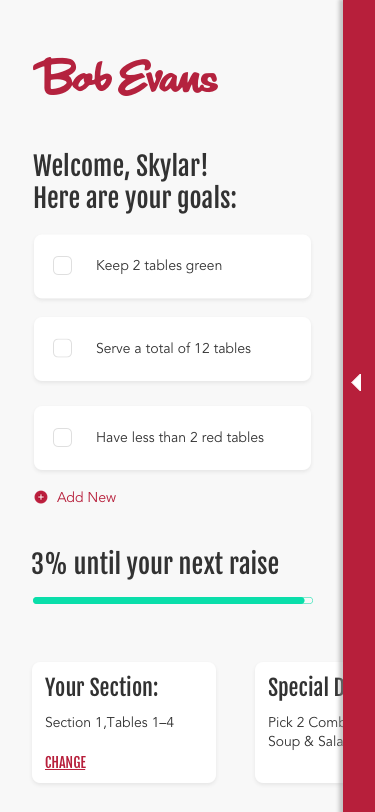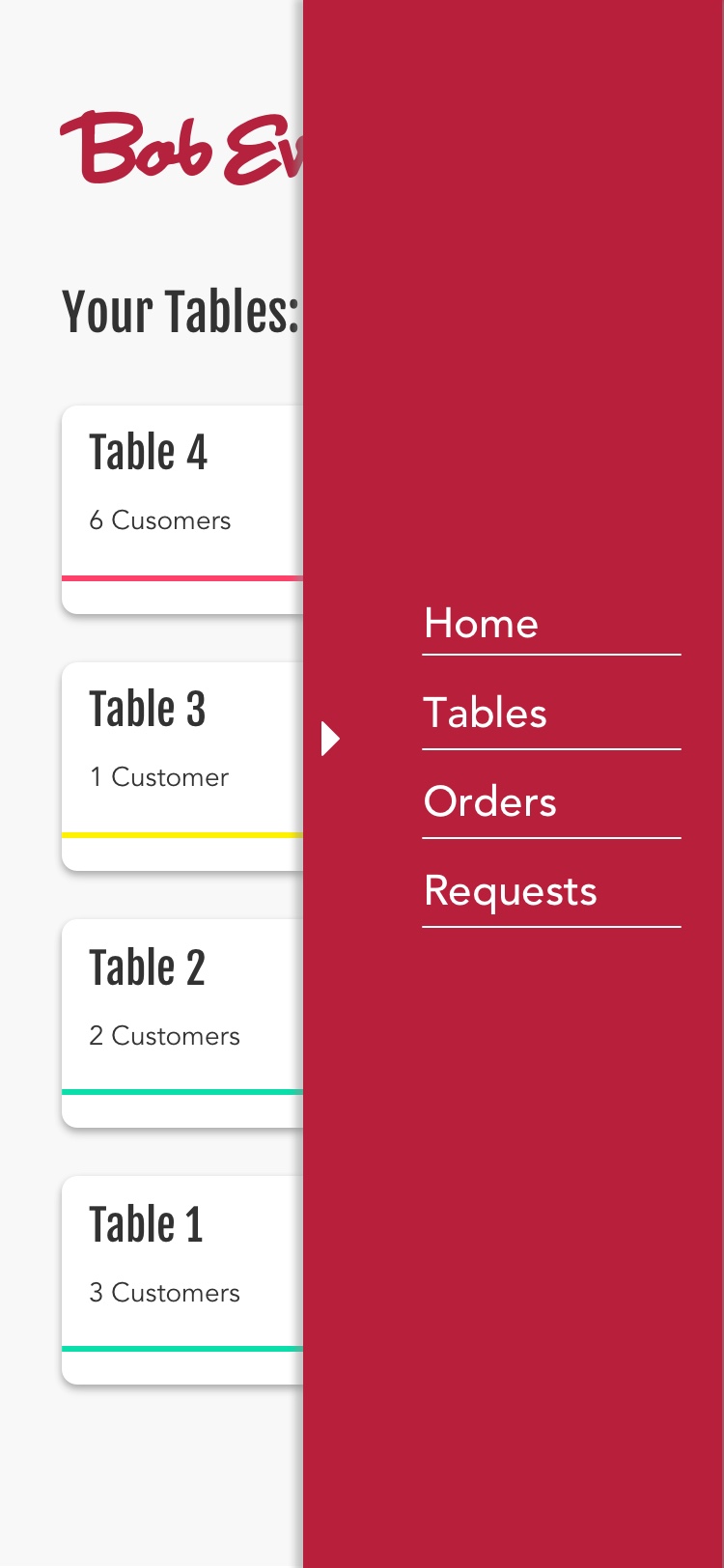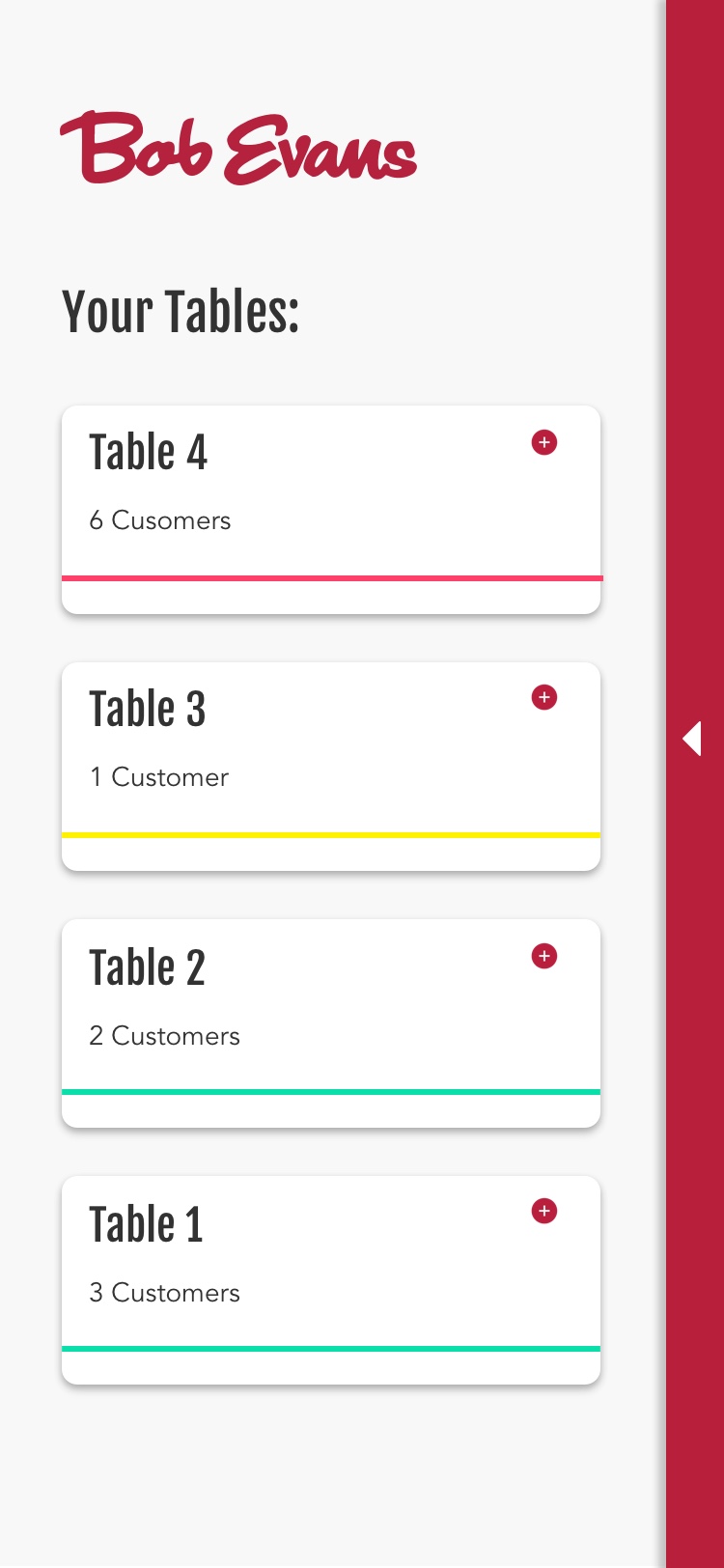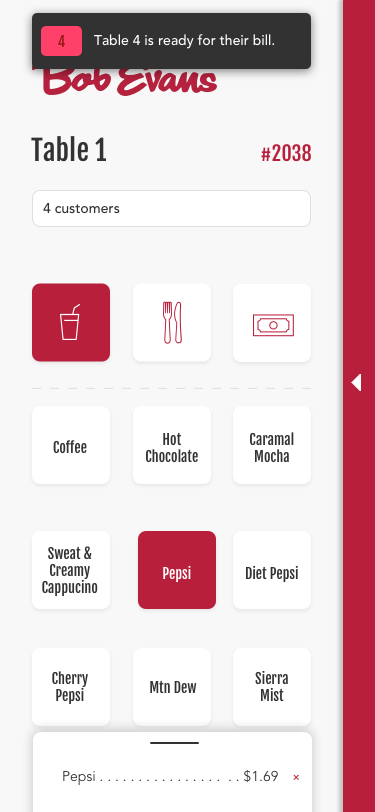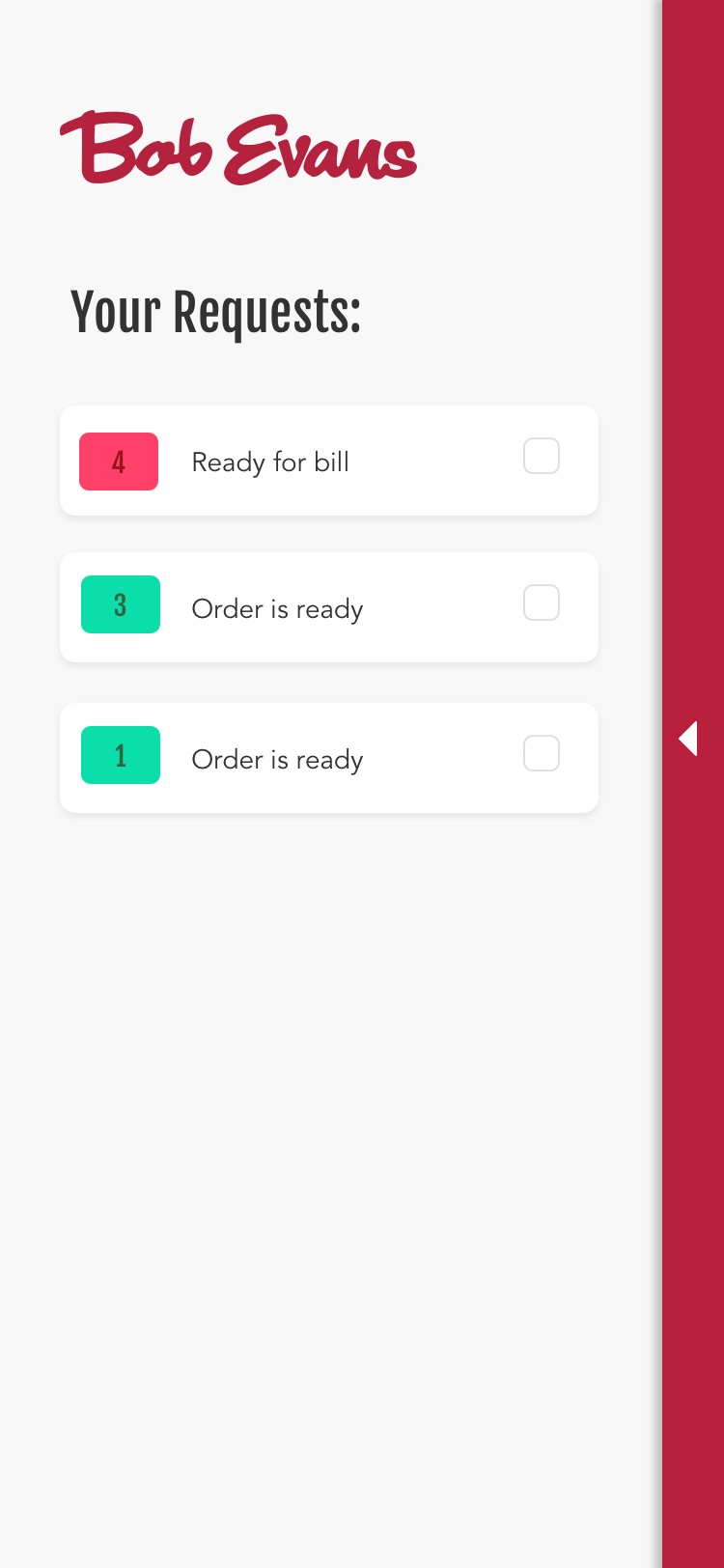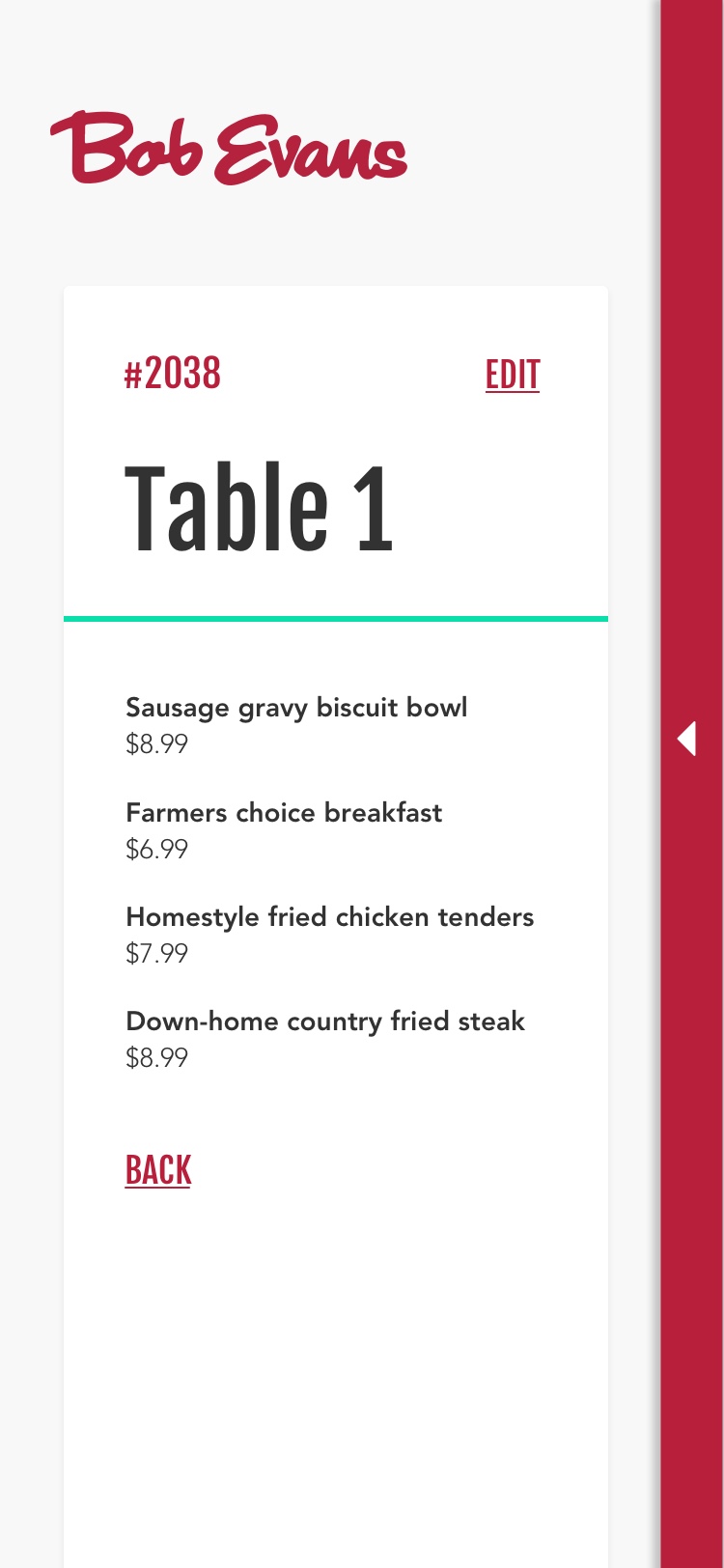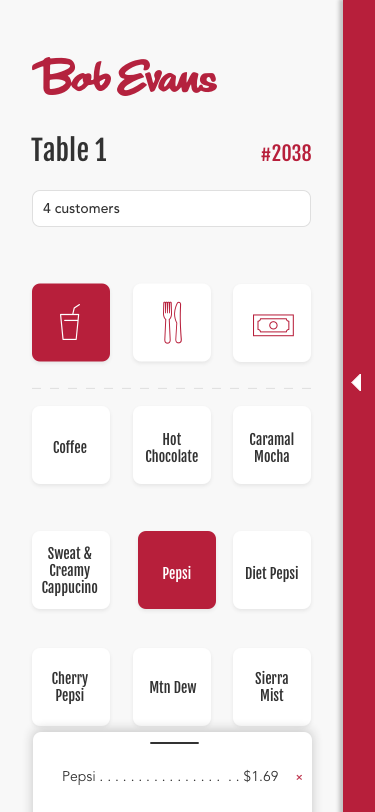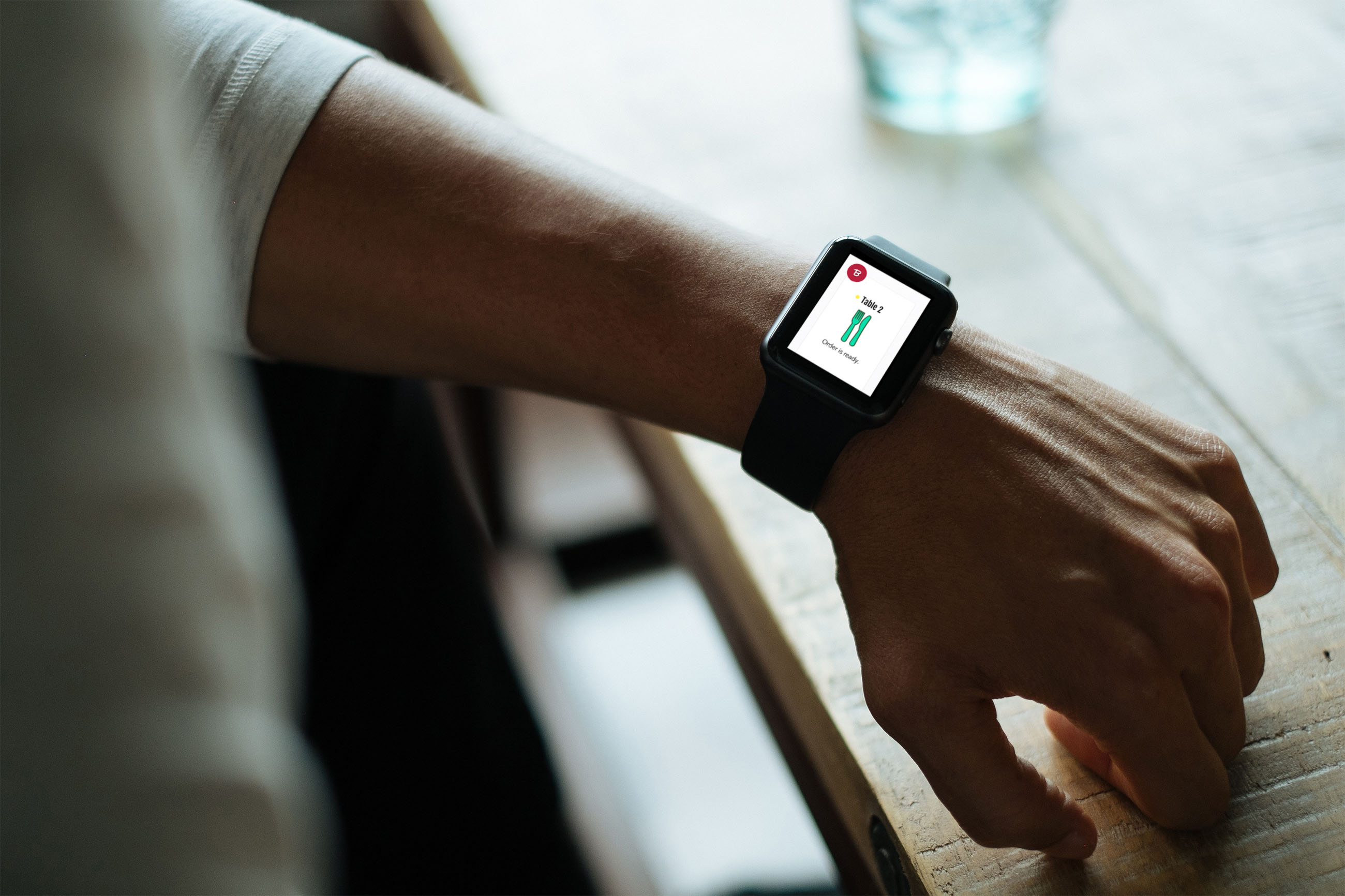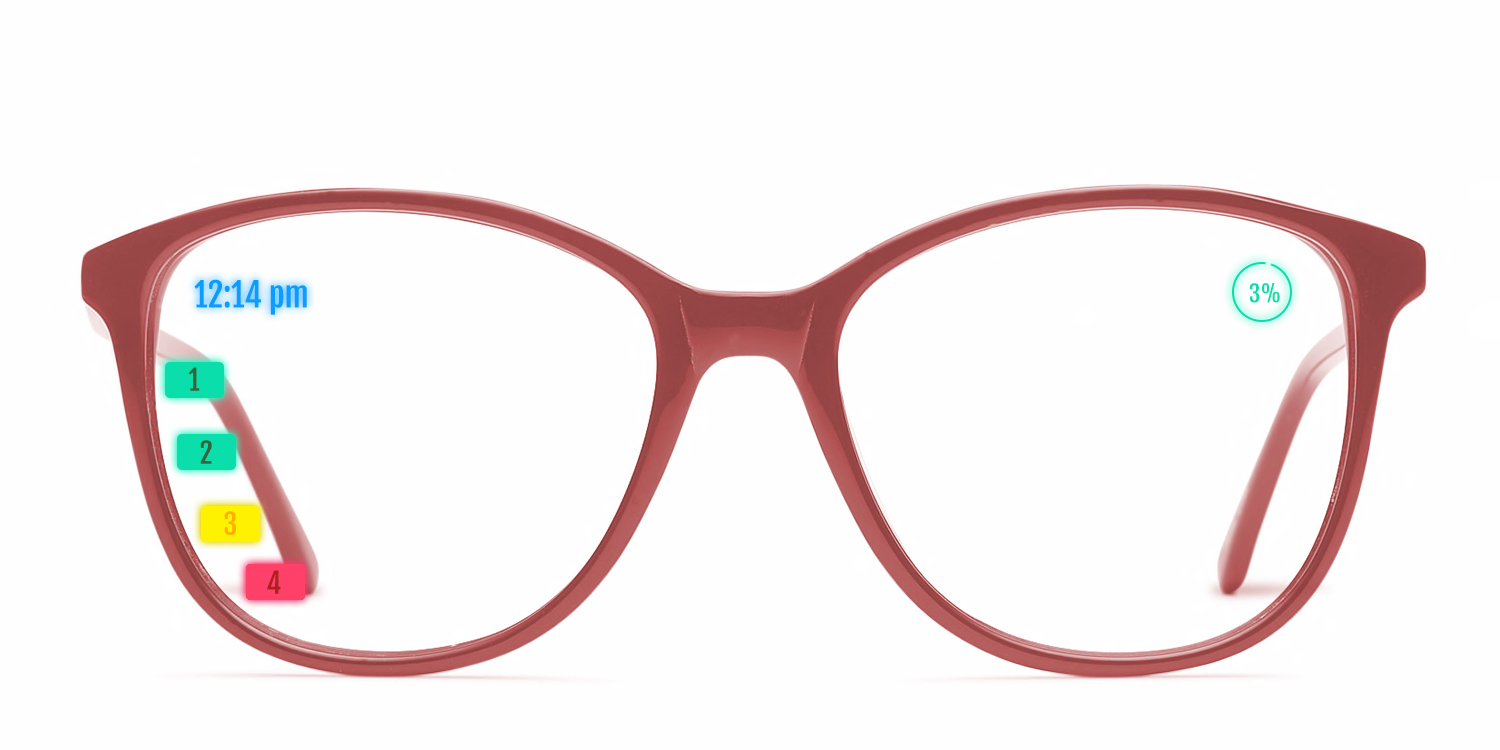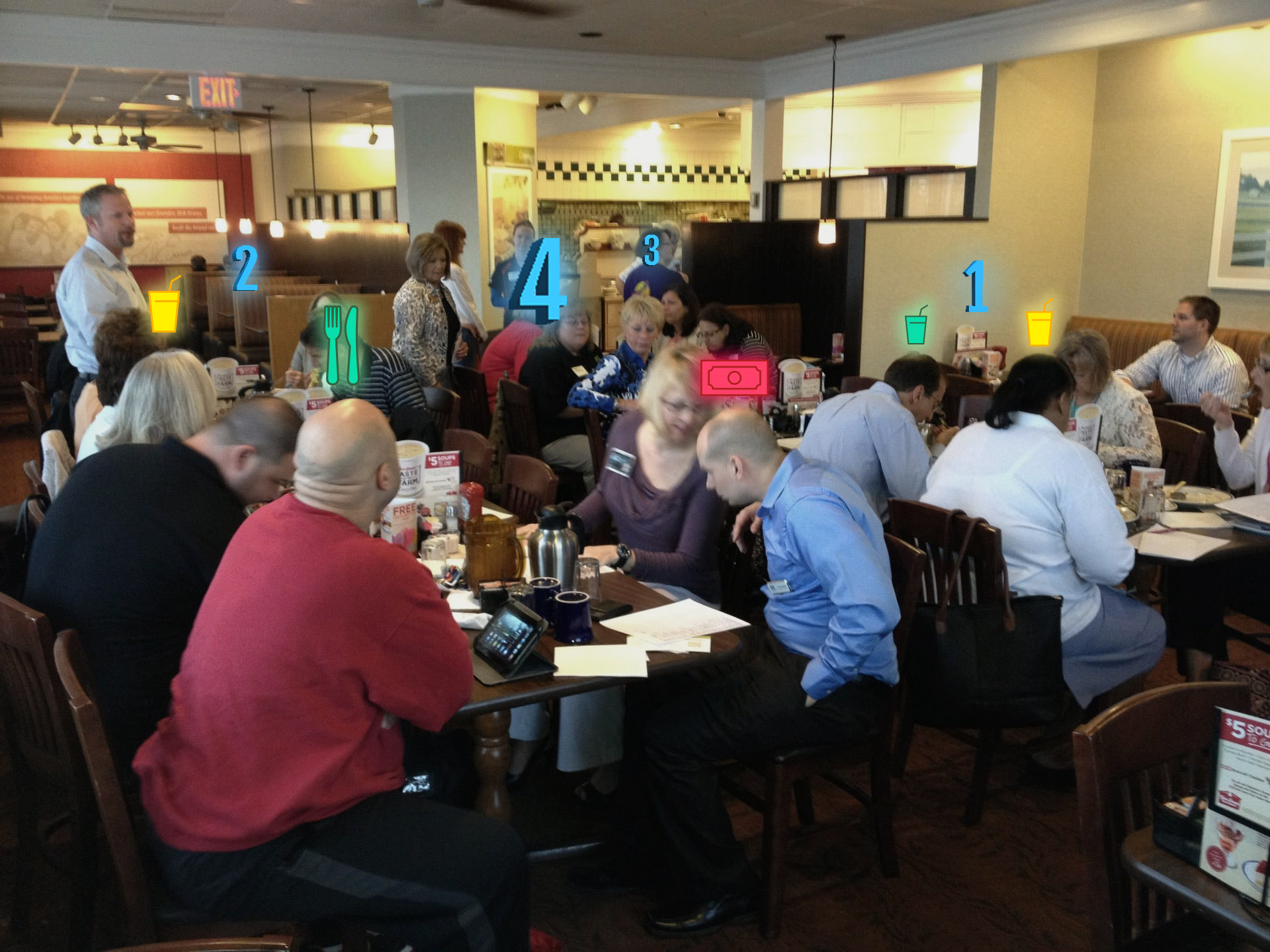Bob Evans
Service is slow and inaccurate because servers often get overwhelmed, forget, or mix up orders and customer concerns.
The Improved Server Workflow
Servers first enter a table’s order into their provided smart device.
Once the order is ready, the server is notified through smartwatch technology.
The order is taken to the table.
Servers use augmented reality to visualize customer wants and needs.
"The waitress never came back to the table to ask how anything was."
"The service is very slow, even in the middle of the day."
The App: Wireframes
Wireframes were created to determine key information that servers regularly enter and view during their shift.
The App: Static Prototypes
The app will allow servers to record orders and view order and table status, as well as keep track of table requests.
The App: Smartwatch
Servers will also have smartwatches that will alert them of key actions like an incorrect order or that an order is ready to be brought to a customer.
The Glasses
Augmented reality glasses allow servers to better understand customer needs. Each table will be color-coded based on level of need, and for each table that is kept green, the server will gain progress towards a microraise.
